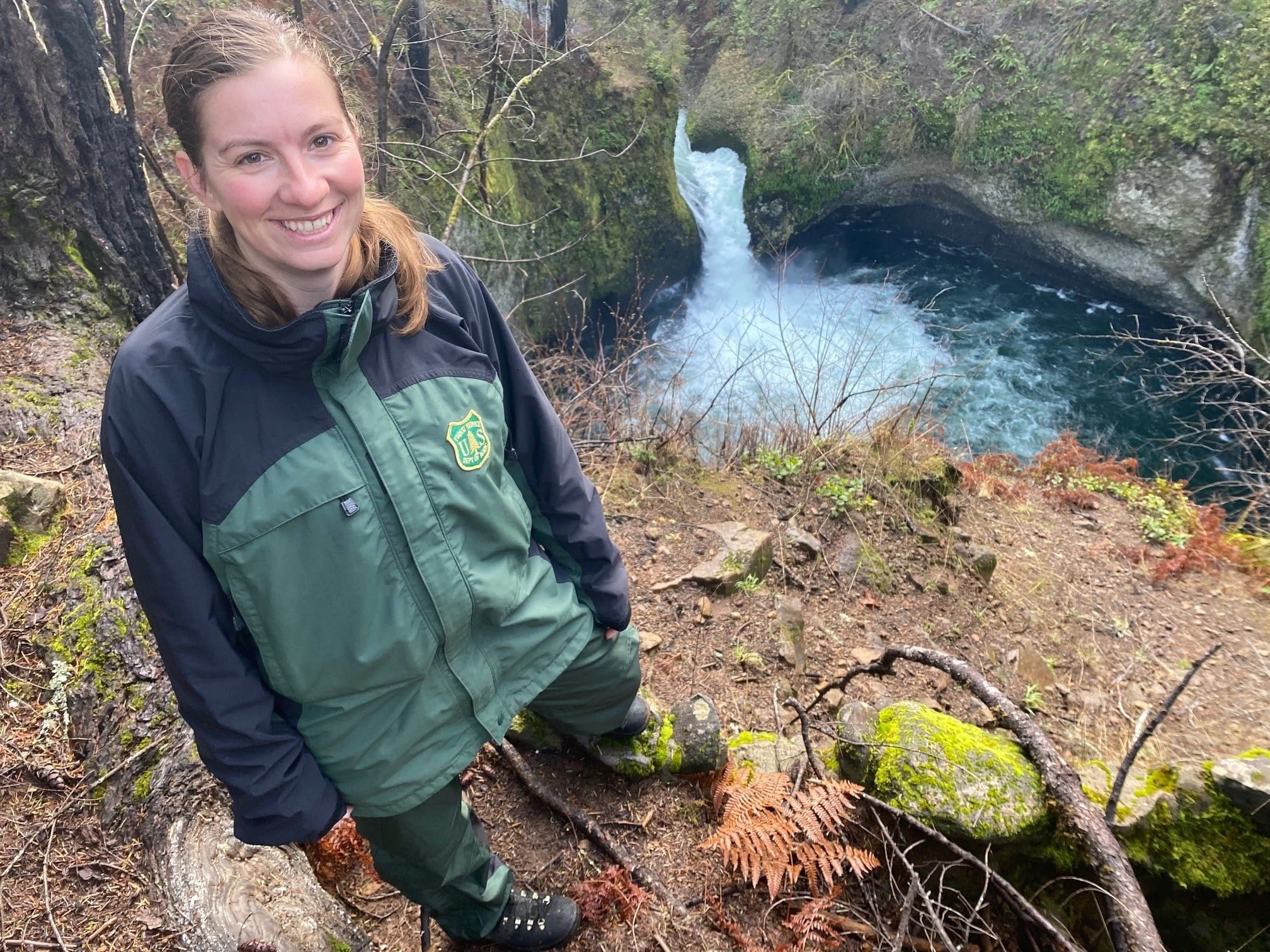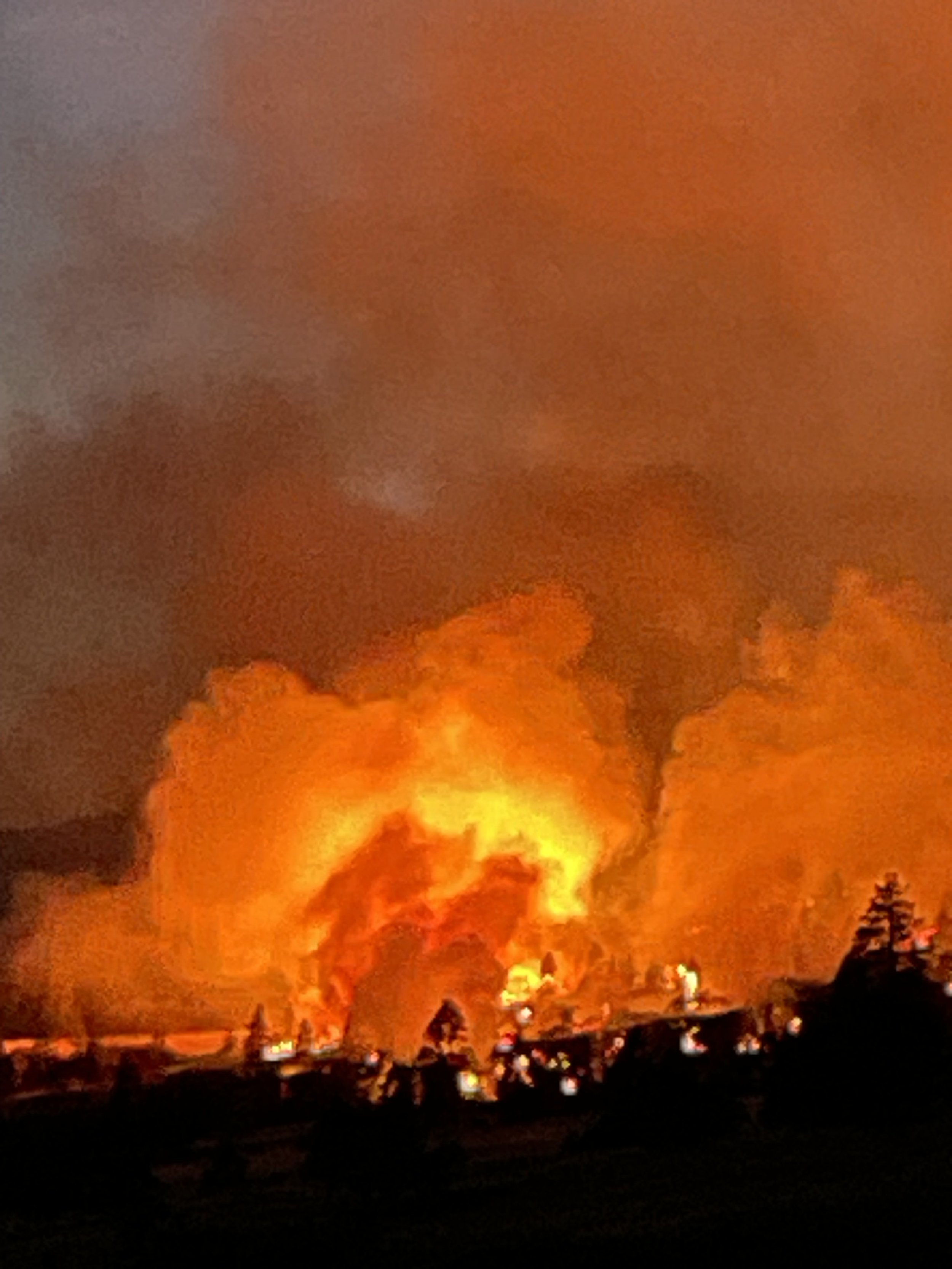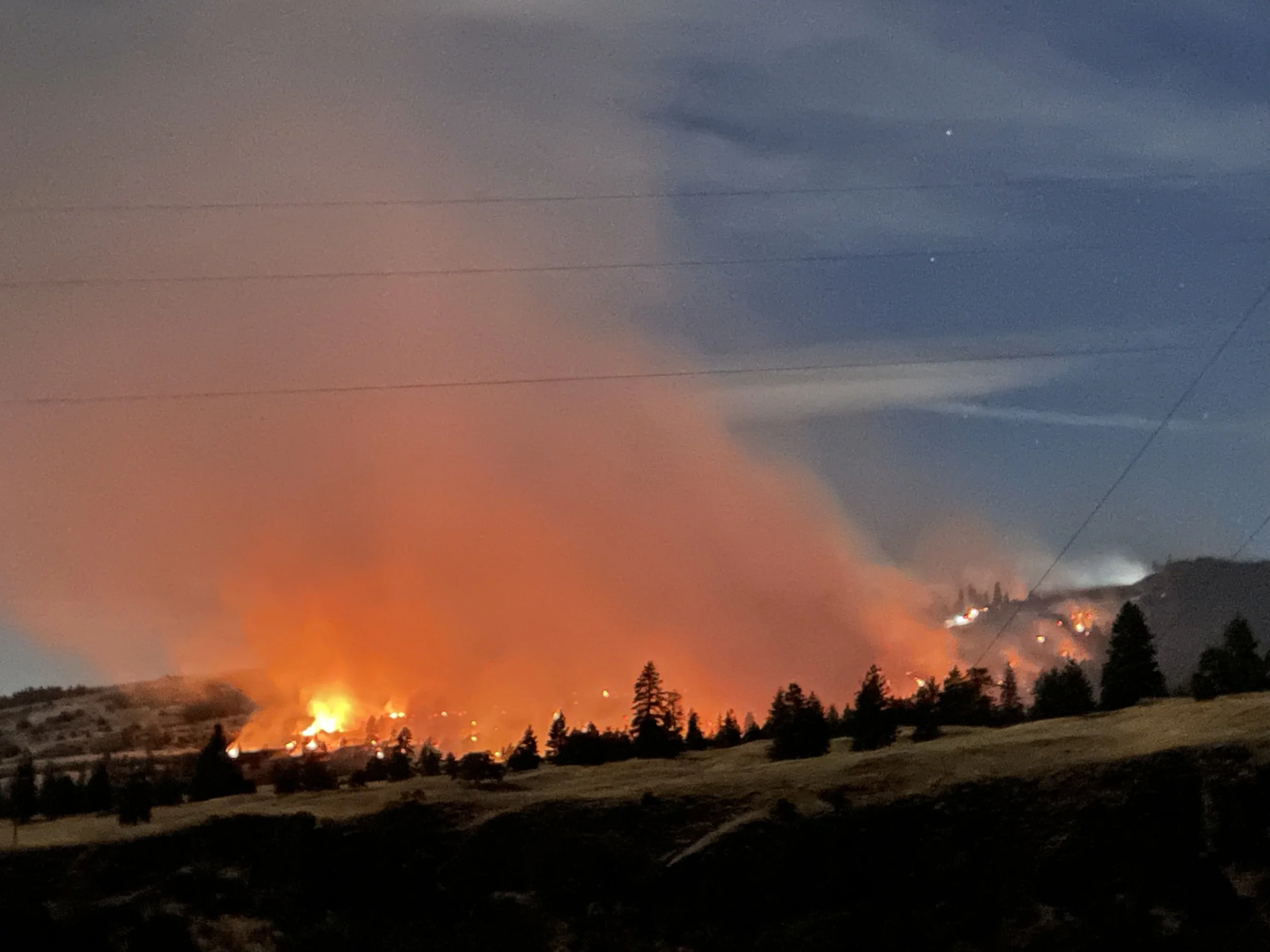Forest Service stands by decision to light fire between Bingen & Lyle
Cost to battle prescribed burn at $300,000 thus far
By Tom Peterson
Carissa Silvis, a Fire Prevention Technician with the US Forest Service / Columbia Gorge National Scenic Area. Photo courtesy US Forest Service
The Dalles, Ore., Oct. 18, 2024 — A prescribed burn that jumped the lines on Monday, Oct. 14 between Bingen and Lyle is estimated at 171 acres as 120 personnel were assigned to thwarting the blaze.
Many locals are livid that the Forest Service lit the prescribed burn on Monday morning after heavy gusts of wind at around 4 p.m. sent hot embers from the fire into areas outside of the designated burn threatening the Catherine Creek and Coyote Wall trail systems.
A close up of the Top of the World Fire taken on Monday evening.
At the same time, fire managers contend that prescribed fires are necessary to avoid larger and more destructive wildfires that have occurred in the last decade and point to their good record on managing prescribed burns.
“Firefighters are still working to achieve 100% containment of the Top of the World Fire. Personnel and equipment will continue work until the fire is called out,” said Carissa Silvis, a Fire Prevention Technician with the US Forest Service on Thursday, Oct. 17.
A helicopter drops water on the Top of The World Fire on Tuesday, Oct. 15.
“Numerous engines, water tenders and two dozers were being used initially on the fire on Oct. 14,” she said. “Three retardant drops from large air tankers were used to check fire spread. On Oct. 15, firefighters used two helicopters to help cool down hotspots as crews completed construction of fire line.”
She said the cost to battle the blaze stood at $300,000 at the end of Thursday.
CCCNews: Was it a mistake to light this fire?
“Prescribed burning is highly dependent on weather conditions, which must be within a narrow criteria window to use prescribed fire. Factors such as wind speed and direction, temperatures, relative humidity, and moisture levels of understory vegetation are all taken into consideration prior to implementing a prescribed burn operation,” Silvas said. “The Top of the World Prescribed Fire Project met these conditions.”
A narrow weather criterion for a prescribed burn typically includes a moderate, steady wind speed between 4 and 15 mph, a relative humidity level between 30-50%, a moderate air temperature, and a stable atmospheric condition, with the wind direction remaining consistent throughout the burn area; essentially aiming for conditions that allow for controlled fire spread without sudden gusts or drastic changes in humidity or temperature.
Photo of the fire also taken Monday evening.
“We can never guarantee that prescribed fires won’t escape because there are risks when we use this tool. It’s a trade-off we have to take seriously together with communities. The alternative is more large and destructive wildfires like we have seen the past several decades—a result of the combination of overgrown forests, climate change, a growing number of homes in the wildland-urban interface, and more than a century of fire suppression.”
CCCNews: Is it common for prescribed barriers to jump out of the intended burn area?
On average, the Forest Service ignites about 4,500 prescribed fires each year, treating about 1.3 million acres across the National Forest System. Almost all prescribed fires—99.84 percent—go according to plan.




